Curiosity of Space Alive with LOOT
by BONZO, HSM team writer
The fascination we once had as a nation — rather, as a world — with space exploration seems to have diminished once the competitive motivation to beat the Russians fizzled out. Since the monumental first landing on the moon — the only other planetary body a human being has set foot on — the national interest and national pride seemed to have dwindled. Suddenly, questions were being asked: why are we going out there? Why should we spend the money? Who cares? Why aren’t we focusing on problems on Earth?
The fascination with space isn’t dead, though; it continues in the hearts of the passionate individuals who have devoted their careers to space exploration, and within the hearts of the millions of astrophiles congregated under a geek or nerd label.
I can think of many reasons why we should, and need, to keep exploring space, and learn more about our place in the universe and how it all began. One of my favorite proverbs has always been, “Necessity is the mother of invention,” because it is a very simple phrase which so perfectly sums up a universal truth. Ingenuity is sparked in the need to solve a problem, and the many challenges faced by the initial space program resulted in tremendous advances in technology we take for granted today.
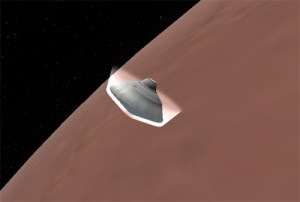 In the real world, while discussing or mentioning in passing the Curiosity rover on its way to Mars, it was often met with a blank stare or a confused look. It was surprising to me how many people were unaware of it. It’s understandable; it’s something that doesn’t affect us directly, just an interesting bit of history to be witness to. The public gets the benefit of the knowledge of discoveries after they have been made, but we are not directly involved in the discovery process. When you have such a specific interest, it tends to be something you keep to yourself, until you find others that share your fascination. I had resolved myself to staying up to watch this event on my own, until the Home community reminded me of the extended circle of friends I have with in it. Suddenly I discovered how many of the people I interact with — as we try to annihilate each other — were also staying connected to the rover’s progress.
In the real world, while discussing or mentioning in passing the Curiosity rover on its way to Mars, it was often met with a blank stare or a confused look. It was surprising to me how many people were unaware of it. It’s understandable; it’s something that doesn’t affect us directly, just an interesting bit of history to be witness to. The public gets the benefit of the knowledge of discoveries after they have been made, but we are not directly involved in the discovery process. When you have such a specific interest, it tends to be something you keep to yourself, until you find others that share your fascination. I had resolved myself to staying up to watch this event on my own, until the Home community reminded me of the extended circle of friends I have with in it. Suddenly I discovered how many of the people I interact with — as we try to annihilate each other — were also staying connected to the rover’s progress.
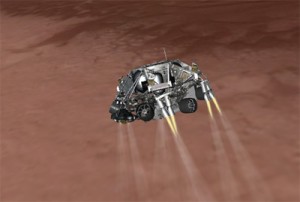 LOOT’s innovation with in-Home entertainment on demand, and the inclusion of the NASA channel, gave us a great opportunity to share the experience together. I may have been alone in the living room watching this event on the television and on the computer monitor, but I was sharing the experience with friends on the LOOT Space Station and millions of others on the social networks, both on a laptop and a smart device. It occurred to me then: I wouldn’t have any of these without the innovations of the space program. Those satellites wouldn’t be up there orbiting the Earth, transmitting every tweet, picture, or comment, and I certainly wouldn’t be able to view the simulation on the “Eyes on the Solar System” website, or the live feed on Loot EOD.
LOOT’s innovation with in-Home entertainment on demand, and the inclusion of the NASA channel, gave us a great opportunity to share the experience together. I may have been alone in the living room watching this event on the television and on the computer monitor, but I was sharing the experience with friends on the LOOT Space Station and millions of others on the social networks, both on a laptop and a smart device. It occurred to me then: I wouldn’t have any of these without the innovations of the space program. Those satellites wouldn’t be up there orbiting the Earth, transmitting every tweet, picture, or comment, and I certainly wouldn’t be able to view the simulation on the “Eyes on the Solar System” website, or the live feed on Loot EOD.
It was surreal to track the same information on three different technological devices, and yet the experience was different for every one of them. The smart device giving me a glimpse of what the public was experiencing through Twitter and Facebook. The laptop giving me more information directly from NASA, and PlayStation Home giving me a communal experience by allowing me to see it with friends remotely, and yet together in a virtual setting.
The intent was to share the experience collectively with the community; the LOOT theater was packed in the instance I managed to join. I don’t know how many instances were spawned, but I know I had at least two friends in separate servers. It was a problem trying to join the same one, because they filled up fast. I don’t know if everyone in the theater was there to see the NASA channel, but many people were talking about it. When we managed to join and tuned into the NASA channel on the EOD, the feed was choppy, and froze often, and made it difficult to hear what the commentary was. It may have been the public space theater was being taxed to the limit, but we realized we couldn’t see it that way. So we moved on to the LOOT Space Station, and the feed was a lot smoother even though the audio synchronicity was offset. Around midnight Eastern Time I began to get invitations from other people on my friends list hosting parties, and it really was heartwarming to see how many of the community members were taking an interest in this.
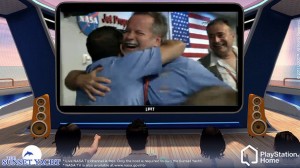 The big moment, when you finally learn the rover has touched down safely, was truly a collective experience. The live feed, transmission delays or not, gave you a glimpse of what the people behind the project were feeling. You see their reaction and it isn’t just a recap on the news, you are watching it essentially as it happens and you are joined by millions of people around the world, and Home gives you the chance to experience it with friends in a more intimate settings. It was truly transcending and was only marred by the realization that it isn’t in real life but in a digital world, but it was nevertheless a great experience that gave you a glimpse of what it may have been like 43 years ago when the entire world was tuned in to watch the moon landing.
The big moment, when you finally learn the rover has touched down safely, was truly a collective experience. The live feed, transmission delays or not, gave you a glimpse of what the people behind the project were feeling. You see their reaction and it isn’t just a recap on the news, you are watching it essentially as it happens and you are joined by millions of people around the world, and Home gives you the chance to experience it with friends in a more intimate settings. It was truly transcending and was only marred by the realization that it isn’t in real life but in a digital world, but it was nevertheless a great experience that gave you a glimpse of what it may have been like 43 years ago when the entire world was tuned in to watch the moon landing.
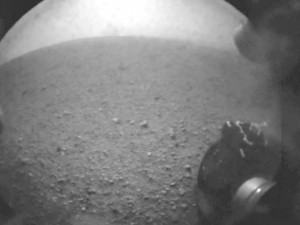 The population may not have the same interest in space that it once held; it may be there is a detachment because we are sending robots and the whole world may tune in the day we land a manned mission on Mars. The world’s population has exploded since that first step taken on the moon, and we are different people now; some things may take precedent when you have real life to contend with. This isn’t the first rover, but it is the largest rover sent out there, and this mission may be just one more in a series of missions that will be launched.
The population may not have the same interest in space that it once held; it may be there is a detachment because we are sending robots and the whole world may tune in the day we land a manned mission on Mars. The world’s population has exploded since that first step taken on the moon, and we are different people now; some things may take precedent when you have real life to contend with. This isn’t the first rover, but it is the largest rover sent out there, and this mission may be just one more in a series of missions that will be launched.
Still, it doesn’t take away from the absolute phenomenal feat it was to get that robot there. The absolute precise conditions and calculations that leave no room for error, and millions of people recognize that. If you think interest in space exploration is dead or only important to the nerds and geeks of the world, consider that after the landing the NASA website servers were crashing due to the high traffic trying to get a glimpse of the first images. There are millions of us, we are not alone, and thanks to LOOT some of us were able to share in that collective experience in a very unique way.


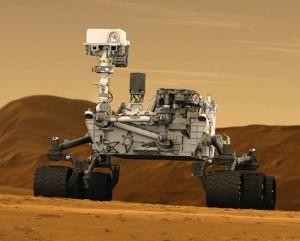
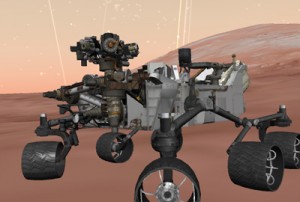
 Twitter
Twitter
Right on Bon!!! From one space geek to another I love this article! There are few things as iconic and productive in unifying humanity as space travel is.
Imagine this- when NASA showed the first photo of the Earth hanging out there in space- relatively alone -That was it… we are here -all of us -on this little blue drop in the sea of space. Suddenly we were all brothers and sisters -we were all part of each other in a way that we previously could not fathom.
I cannot tell you how grateful I am to read this article. It is so important. It is so much better than say establishing a nationality through witnessing the first attack on American soil since WWII. It is so much more universal and inclusive….
To my mind, one ( good) reason for not exploring space is because we’ve not explored our oceans enough. However, I cant think of anything else as important as exploring the massive, unlimited vastness of the space around us. And yeah, it is just the stuff close to us that we can reach, and that’s not a lot. People dont think it’s important because most people cant comprehend just how massive it is, and what that all potentially holds.
Anyone reading this that is maybe shakin’ their head at this, understand this; space is bigger than you can imagine: think how big a grain of sand is, now imagine that’s our whole planet, and every tiny grain of sand is another planet or asteroid or any of the million things that’s out there. Now imagine the beach is 1000 miles wide and deep. How many grains is that? Well dont count them yet coz we’re not done! Now imagine that beach is one of many, millions in fact, and all of those make up a desert, a desert that’s part of a planet. A planet sized desert of nothing but grains of sand, and each grain is a whole world. If you can imagine this, then you’ve got an idea of how big a FRACTION of our universe is.
Now tell me there’s nothing out there to find.